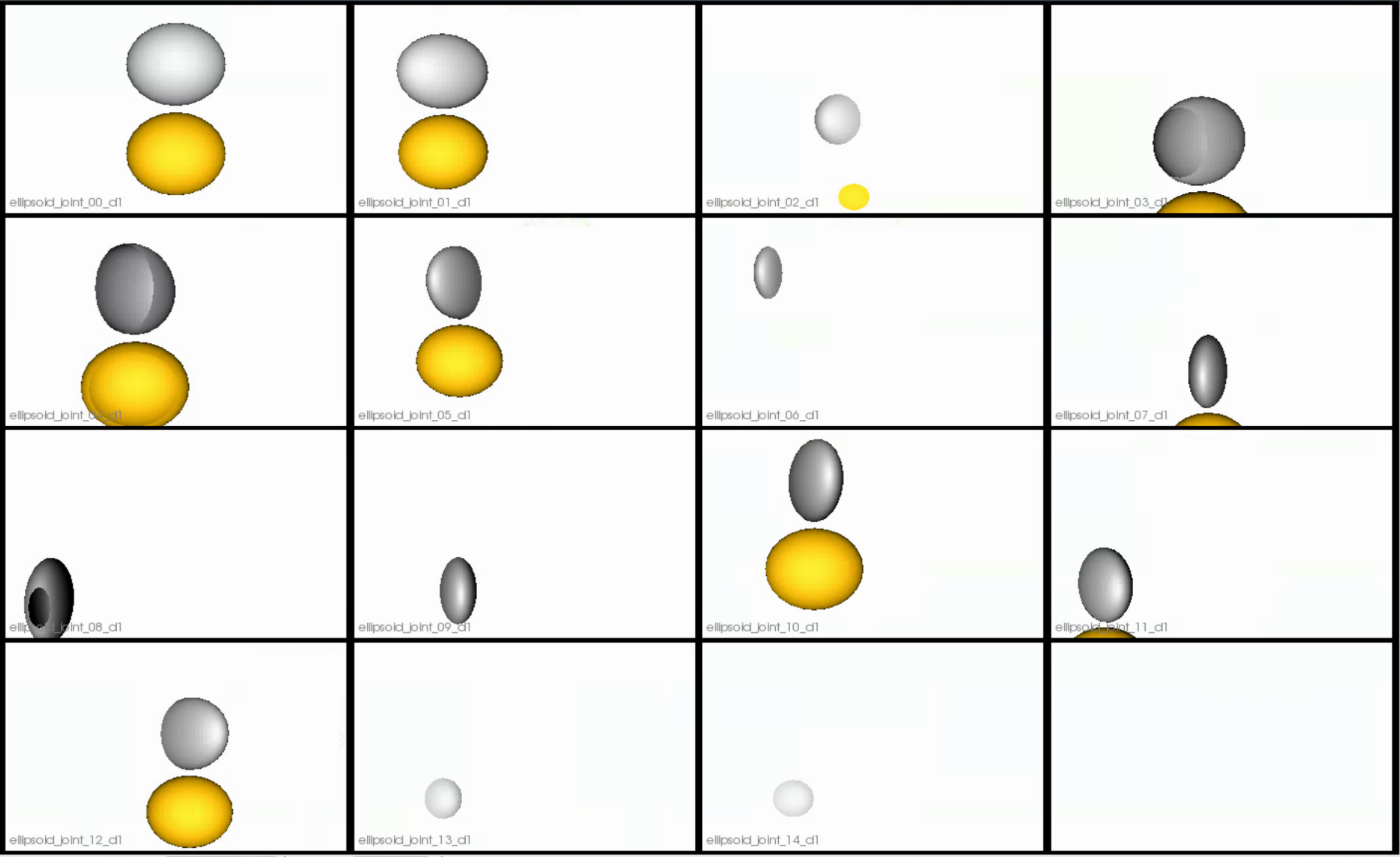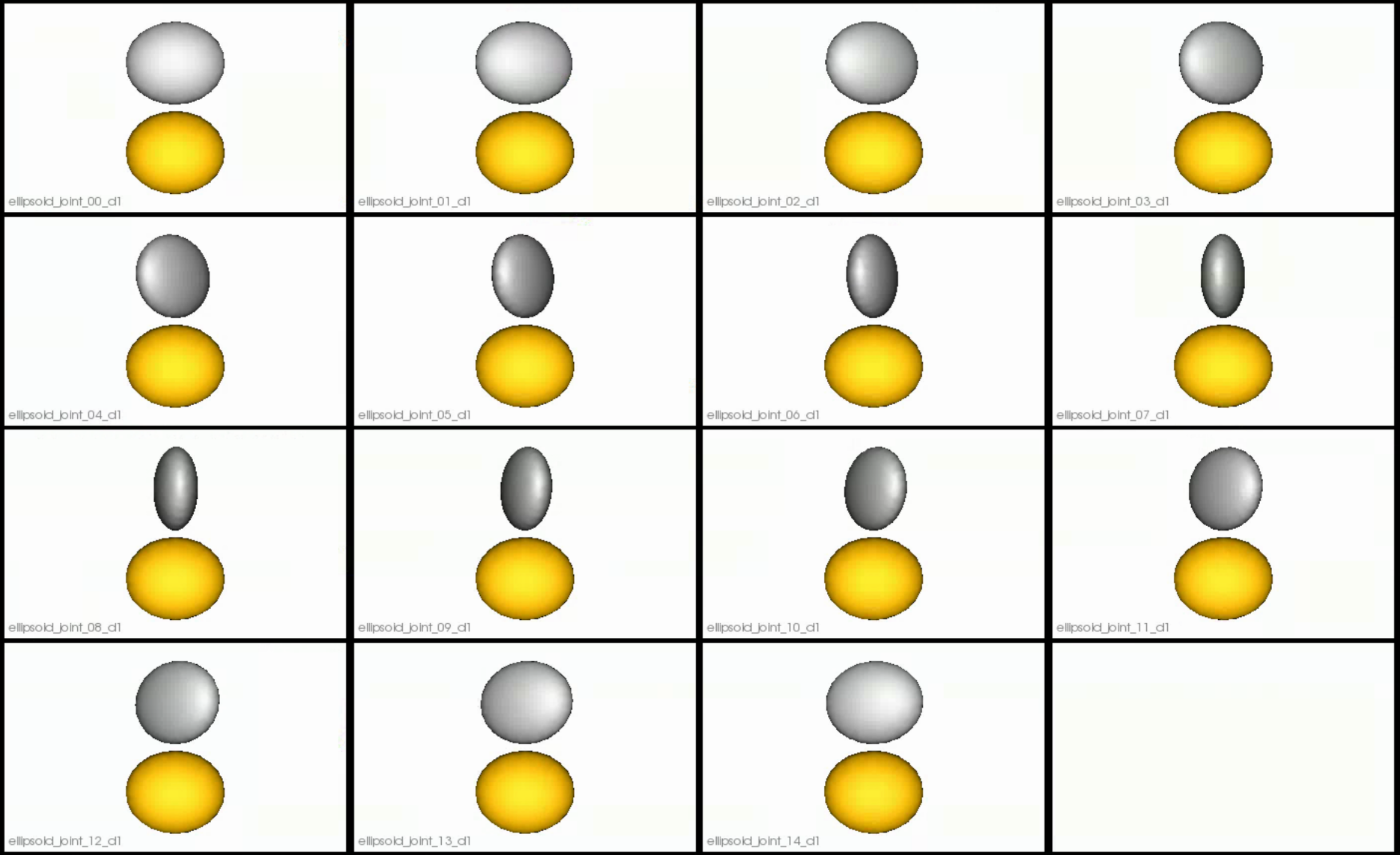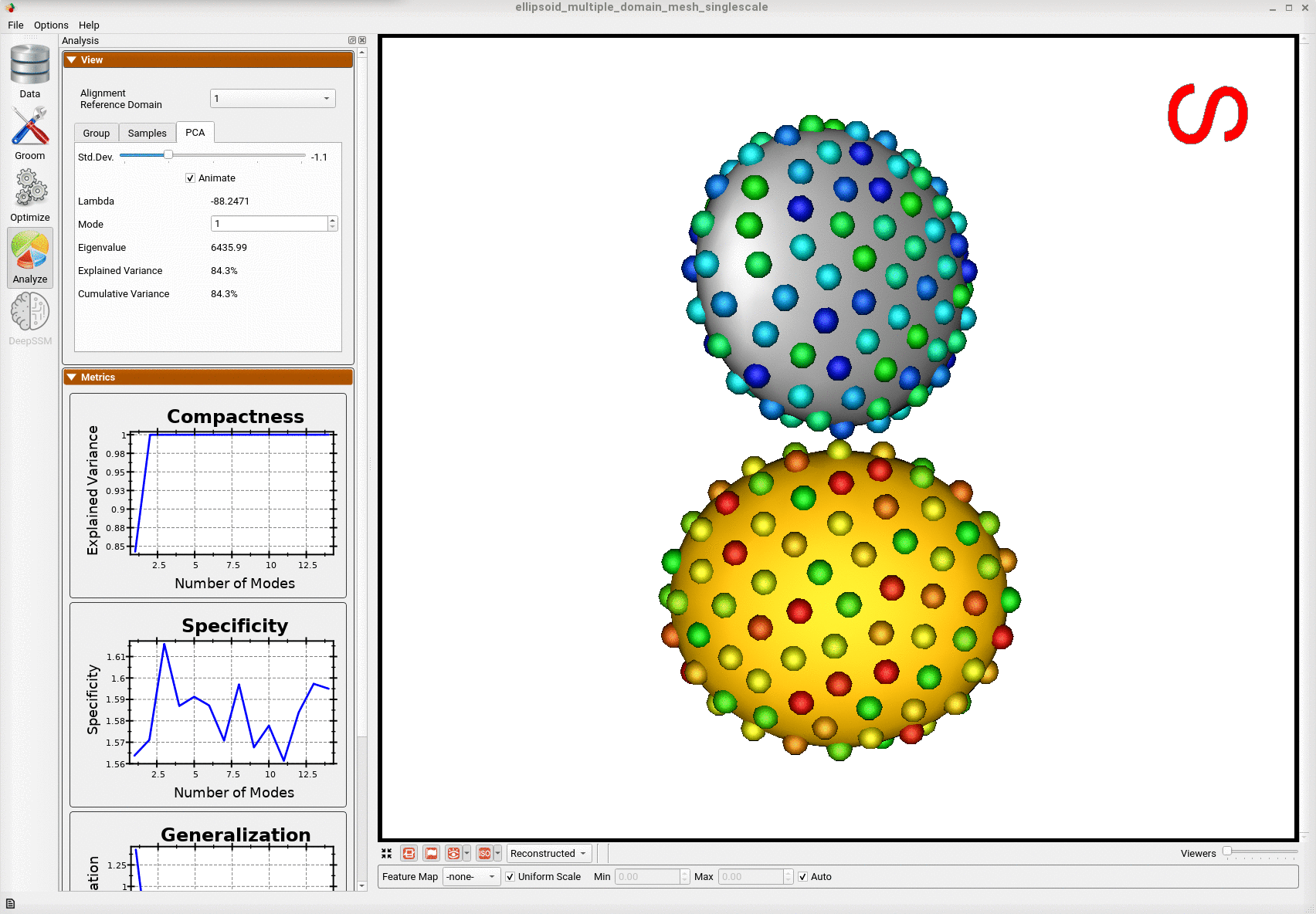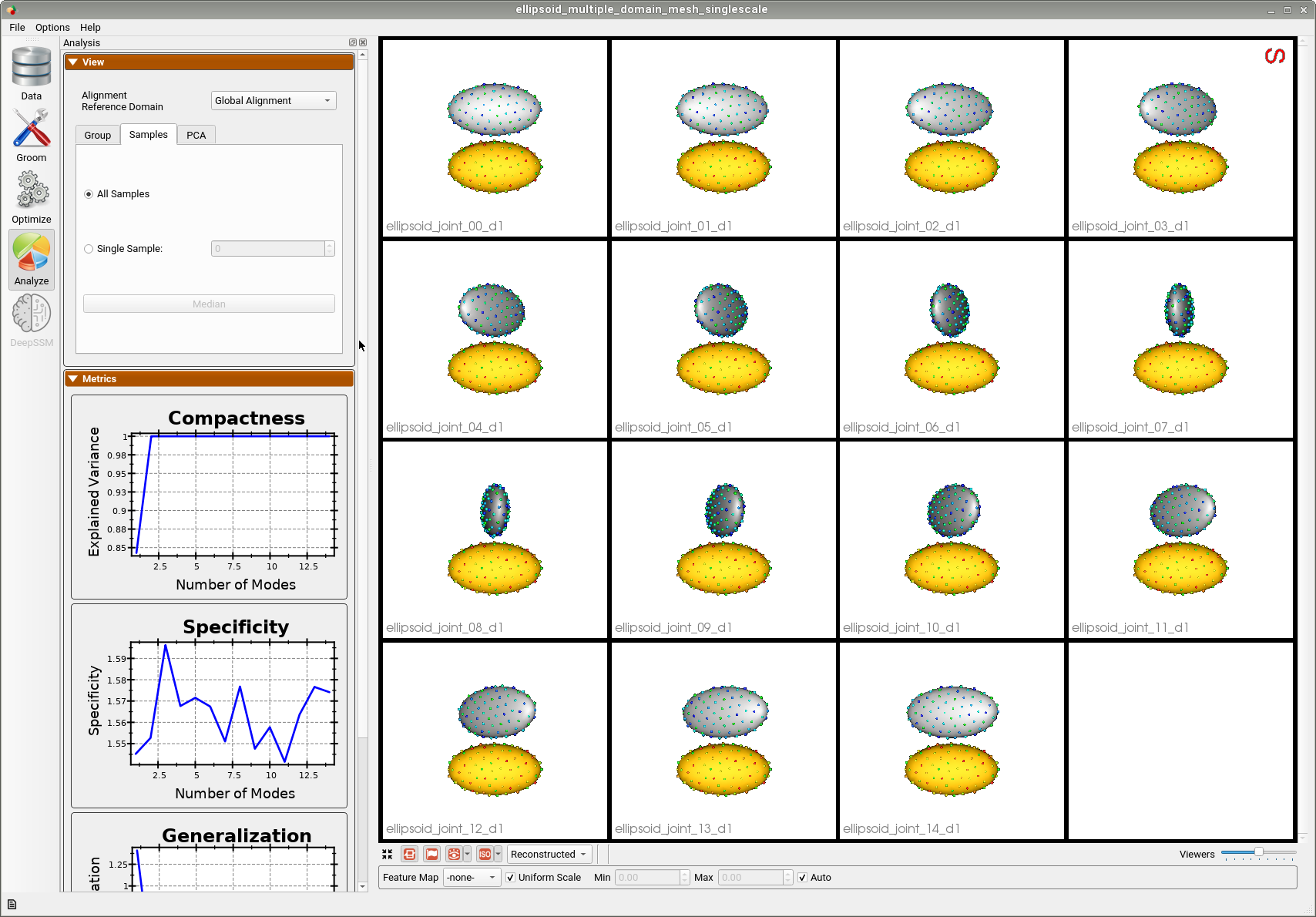Shape Model for Multiple Domains directly from Mesh
What is the Use Case?
The ellipsoid_multiple_domain_mesh use case demonstrates using ShapeWorks tools to perform shape modelings for anatomies with multiple structures (domains), e.g., joints to capture inter-domains correlations and interactions directly on triangular surface meshes
The dataset available for this use case:
- ellipsoid_joint_rotation - two stacked ellipsoids with the same radii, with the top ellipsoid rotating w.r.t the bottom ellipsoid.
Grooming Data
This is how the meshes in the dataset look before grooming.Here it can been seen that the ellipsoids have random centers andn orientations.
- Remeshing: Meshes are remeshed to ensure uniform vertices.
- Reference Selection: The reference is selected by first computing the mean (average) mesh, then selecting the sample closest to that mean (i.e., medoid). The reference is selected based on domain 1 shapes.
- Rigid Alignment: For all the shapes, the transformation is calculated to factor out translation and rotation based on the reference shape.This transformation matrix will be sent to the optimizer as a 'prefix transform'
Here we show how the shapes would look like if the transforms are applied.

Relevant Arguments
--use_subsample --num_subsample --use_single_scale --tiny_test
Optimization Parameters
The python code for the use case calls the optimize command of ShapeWorks which reads the project sheet with the shape filenames and optimization parameter values. See Project excel file for details regarding creating the project sheet.
Below are the default optimization parameters for this use case.
{
"checkpointing_interval" : 200,
"keep_checkpoints" : 0,
"iterations_per_split" : 200,
"optimization_iterations" : 200,
"starting_regularization" :1000,
"ending_regularization" : 0.1,
"recompute_regularization_interval" : 1,
"domains_per_shape" : 2,
"relative_weighting" : 10,
"initial_relative_weighting" : 0.1,
"procrustes_interval" : 0,
"procrustes_scaling" : 0,
"save_init_splits" : 0,
"verbosity" : 0
}
num_particles = [128,128]
Analyzing Shape Model
Once the python code runs the optimization, the files are saved in the Output folder after which ShapeWorks Studio is launched from the python code to analyze the model.
Here is the optimized shape.

Below are the particles for each sample, we can see they are uniformly distributed.
